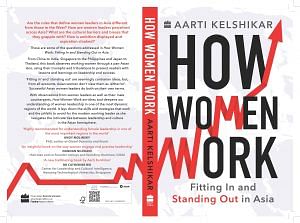When women leaders take tough decisions or actions, they are often viewed differently, given the ‘likeability conundrum’ where in general, women are expected to be agreeable, warm and nurturing. I asked some leaders, male and female, how women are perceived when they are very assertive and direct at the workplace. These are some reactions they shared:
- She is being ‘aggressive’
- She is being ‘very bossy’
- She is a ‘tough iron lady’
- She is too ‘emotional and is overreacting’
- She is a ‘B@#$%’
These perceptions often get compounded in patriarchal cultures. The point may be communicated differently, but the gist remains the same: If a woman conveys a tough message, it is less acceptable than when a man does. Broadly speaking, when women leaders are perceived as ‘too powerful’, it threatens to lower their likeability quotient.
In this regard, HR leader and growth mindset advocate Dr Susan P. Chen’s viewpoint is relevant: ‘Generally speaking, a very outspoken woman is perceived more as a rebel, compared to an outspoken man. And I’ve seen that across the different countries I have worked in, whether it’s a mature market or an emerging one.
For instance, it’s less prevalent in countries like Norway, but in some countries in Southeast Asia, an outspoken woman is often labelled as a “rebel” or “aggressive” compared to a man who is “confident”. This does influence the way women think about engaging or influencing in a leadership role.’ Leaders, both men and women, want to be liked by their teams.
For women who are scrutinized more deeply for a range of reasons, this assumes more complexity. How do women leaders navigate this conundrum? How are they perceived and how do they work around this? These are some aspects explored in this chapter. Here are some strategies and behaviours women leaders have adopted to navigate this tricky terrain.
Tough love Given that being tough in the land of smiles isn’t easy, I asked Lynette how she conveys tough messages in the Philippines in a manner that doesn’t antagonize or alienate her colleagues. 150 how women work Lynette shares her approach here: It is difficult to find the balance, but the way I conduct myself is to always assume a position of equanimity.
As long as I make sense and am sensitive to the people around me, I don’t bother too much or overthink about being liked. I am generally mindful of my words given that Filipinos are sensitive and emotional. For example, during performance discussions, I make sure that my feedback is always honest but balanced.
I think for women it takes a lot to be blunt, mainly because they don’t want to come off as being bullcrap. But it’s such a sexist thing—the minute women are a bit more aggressive, assertive or blunt, people mutter under their breath, and you can see what they are thinking. This is the balance that you need to strike—you could be tiptoeing over the issues and teetering over the edge and what may be needed is a decisive action or blunt force.
Depending on the situation, sometimes if you tiptoe on the edge too much, you won’t get the desired outcome because the people you are speaking with may want a direct, no-nonsense approach.
Lynette’s approach is to be direct and decisive when needed without overthinking it. Yet, she is cognizant of the words and the tone she uses, given the importance of sensitivity, as discussed in an earlier chapter. She is mindful of getting this balance right and maintains a calm demeanour. The reader will recall her early days in New York, where she learnt to develop a thick skin.
Bindaas or badass?
A recent article in an Indian online portal was titled ‘If your boss is tough but fair, work for him’. While reading it, I wondered if by changing one word in this title—so it read ‘If your boss is tough but fair, work for her’—the article would be equally palatable.
In this context, Punita Kumar-Sinha observes from her experience that in the West, typically people who take initiative and speak up do well whereas Indian culture has traditionally rewarded women for being more consensus-building, less aggressive and more self-effacing. She makes a great point: Different cultures reward different types of behaviours. Another factor that determines communication styles is the profession.
For example, women doctors and entrepreneurs in India are fairly assertive. Punita observes that in a setting where hierarchy and going up the ranks is important, women in India fit in and adapt to this. But when women operate in non-linear fields such as in the entrepreneurial, legal, political and medical professions, they are as assertive, or more as women anywhere else.
Coming back to the subject of women in the corporate world, the pitfall when women behave tough or bindaas, a Hindi word that means carefree and daring, is that it can come across as unnatural or haughty. Shahrukh Marfatia, a board director and advisor based in Singapore, has mentored several senior leaders and makes this observation: ‘Often, I find that both Asian and non-Asian women leaders try to sometimes overcompensate their more natural, caring, self-effacing, humble, serving leadership styles with aggression to match some of their alpha male colleagues or bosses.’ This view is broadly corroborated by other leaders, male and female.
 This excerpt from Aarti Kelshikar’s ‘How Women Work: Fitting in and Standing Out in Asia’ has been published with permission from HarperCollins India.
This excerpt from Aarti Kelshikar’s ‘How Women Work: Fitting in and Standing Out in Asia’ has been published with permission from HarperCollins India.



